The Cosmic Harmony of Time and Space by Nunzia Coppola
Article by Nunzia Coppola (Meskalila), Italy
Introduction
…We are like islands in the sea, separate on the surface but connected in the deep.
William James
Astrology is a symbolic and technical art which, by means of calculations, illustrations and analogies, indicates the connection of the Skies and the Earth in cosmic and individual space-time. The processes which evolve through astrological training encourage the perception, the analysis and an understanding of the changes in the life, especially those which help us to adopt conscious attitudes towards ourselves, the environment, society, our Planet Earth, and the Cosmos.
Obviously, these goals are also shared with scientific, social and religious disciplines; as well as with non-scientific and non-religious disciplines which have been guiding humanity since ancient times. There are several typologies of rationality, numerous religious models and many paths, including the lay ones, towards knowledge. A fertile attitude towards research will consider a plurality of theories, including those which are furthest in time and space. For example, the discoveries and the hypotheses of modern physics demand a place in the planetary cultural heritage, in the same way that the Copernican Revolution permeated the Renaissance culture.
Often, that which is not markedly scientific or traditionally religious or culturally familiar, especially if it detaches itself from the standards of the dominant organisations, upsets the homeostatic process of some people. On the other hand, affinities confirm and satisfy, while diversities transform and throw into crisis. The human being often resists change, fearing the transformation of what has been consolidated: he does not want to lose what he has acquired with great effort. He therefore refuses the unknown concepts which could annihilate the beliefs or the mental routines which have been followed for years and which are therefore reassuring: the stronger the refusal, the more hostile, and in some cases more dangerous, they appear to him.
This resistance to change, if pushed to extremes, could create a fundamentalist mentality, determined never to change an idea and to entrench itself stubbornly behind its own convictions. Yet crossing the frontiers of new knowledge and assimilating novel information does not weaken one’s roots; it merely strengthens and enriches them, while the cultural mould resonates in the background as a source of security. Similarly, once their validity has been accepted and assimilated, the differences no longer enter into conflict with the human tendency to hold on to soothing situations in order to preserve the so-called “steady-state”, (the state which has been reached). The meaning of the term difference (from the Latin dif-fero, ‘to spread’, ‘to scatter’) implies the idea of plurality. Today, the new sciences and psychology place a focus upon the study of the harmony between differences, between diversity and unity. For some time now, something has been moving in that direction, as, for example, the research on the synchronicity of some events which are not comprehensible in psychological or physical terms, and which are therefore catalogued as “phenomena of isochronicity in the space of events”.
With the passing of time and with the emerging changes, the desire to promote a reflection on human diversities and to weave the threads of possible social languages gets stronger and stronger. In fact, opening ourselves up to a new discipline is like creating our own way of expressing ourselves according to a rhythm in which the mind, even though it does not lose its original language, harmonizes with a new language and with its intrinsic culture. Amongst the vast number of languages to be studied in more depth, the astrological one also allows for the exploration of a mine which is rich in both old and new knowledge. Obviously, practising Astrology does not mean renouncing science or losing one’s rationality; not least because it is a study which requires logic and method as well as an analogical ability. Astrology is not a faith, nor a confessional choice, nor an essential or salvific practice; but as an evolutionary tool (amongst a thousand others) it can constitute a further opportunity for those who wish to get to know and to apply it.
Strangely enough, even though it is as ancient as time and space, and even though it is practised in every country on our planet, this discipline, which is transversal to many others, lives and expands in a niche dimension on the edge of the marginal, and in fact it is often oppressed by real and proper marginalizing actions. Or, at least, that is the case here in Italy. Just to give one simple example: it has often happened that, for the publication of my curriculum in academic circles, I have been asked not to mention the part regarding my astrological training. Some people associate Astrology with superstition, regarding it as an anachronistic affectation, a primitive reverberation suitable for naive people. I totally share these considerations but only with regard to the Astrology surrogate popularized by the media. I should like to invite whoever wishes to broaden their horizons by experiencing the astrological thought process; but at the same time, I should like to ask that whoever knows this discipline does not trivialise it.
- Interculture and the enhancement of diversities, the founding principles of Astrology
Why are we here? It’s a question that has troubled philosophers, theologians and those who’ve had one drink too many; but theoretical physicists have a more essentialist way of asking the question: why is there anything here at all?
Geoff Brumfiel, 2006
The ancient origin-questions which have intrigued human beings since the beginning of time, continue to spread and multiply.
Who are we? What are we? How are we? Where are we? Where do we come from? Where are we going? How and why do we change?
To know how to “think in complexity” increases the questions; it breaks them up into a thousand other questions, but it helps to discover the harmony between mental processes, whether these be collective or individual. According to the Italian mathematician of the last century, Luigi Fantappiè,2 the entire universe will move towards an ever greater richness of syntropic phenomena resulting in a wealth of differentiations. Irwin Laszlo states that the comprehensive whole of the matter in space-time influences the behavior of each “quantum”, of each atom and of each organism. The same human brain is intimately connected to its environment and to the reality of its composite.
With his “Networks science” Buchanan affirms that personal relationships, the human brain, viruses, communications and transport all act by means of complex networks controlled by principles, which are not visible but which are common to all aspects of reality, making interpretation easier than one could have imagined.4 According to Gregory Bateson, the pattern which connects is a cybernetic concept of unity and interaction between the various objective realities of existence which, although they seem to be separate and independent, reveal a deep computer-like reciprocity, as if nature possesses a kind of mental network in its living totality. I hope to have the chance to study these theories in more depth by analysing their possible parallels with the astrological way of thinking and with some Eastern disciplines; at the moment, I can only point them out as elements of transversality with the theme being dealt with in this paper.
Cross-culture embraces all sciences and all schools of thought, and it goes even further, asking that sources of a different origin be welcomed. Today’s discoveries do not trivialise the ancient theories; on the contrary, each period of time is deeply rooted in the previous one, containing it and surpassing it, but not eliminating it. The future is not predestined, but it is malleable because it is made up of possibilities which go on establishing themselves one instant after another. Enhancing the differences means transcending the unambiguous and absolutist method, accepting interchangeable tools which compete between themselves in their diversity.
In particular, pluridisciplinary research includes exchanges between exact sciences and human sciences, between new knowledge and ancient traditions, like a network in which the knots are the crossroads between Sumer Cosmology, Greek philosophy, Tibetan art, Chinese medicine, Hopi Cosmology, Hindu Jyotisha, the traditions of the American Indians, Superstring Physics, the world of computer networks and many other disciplines, amongst which: ancient and modern Astrology. The enhancement of the differences does not invalidate common conventions, it accepts them, knowing that they are versatile and effective, and used in a different manner depending on the place, the civilization, the culture and the time.
Perhaps, out of all the forms which represent reality, time is the most palpable mirror of transition and difference. This concept is very clear in the history of calendars, where the beginning of the year comes about in dates which do not match, because each New Year’s Day is dependent on the local culture in which the calendar itself was created. We can say the same thing for hours, the measurements created to give a quantifiable limit to time: we are dealing with purely conventional units which are accepted all over the world, even if they resonate in the world of differentiations at different intervals, depending on the selected parameter. In the following illustration, different typologies of hourly subdivisions can be seen.
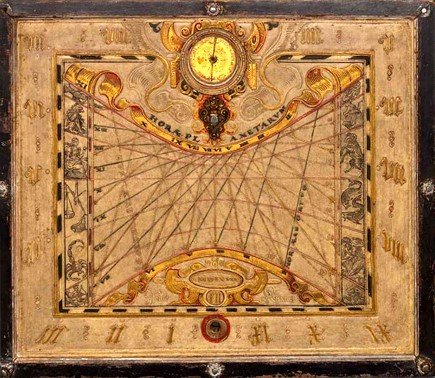
Isaac Kiening, Planethurh, Fussen, 1568.
Solar clock executed on the front page of an ancient volume. The “ab Ortu” or Babylonian hours, the “ab Occasu hours” or Italic hours, the “Astronomical” hours, the Planetary hours, the seven daytime curves of solar declension and the 12 zodiac signs are shown.
Differentiating is like defining the value of many precious stones, knowing that even though they have different colours, transparencies and features, they all belong to the huge treasure chest of jewels offered up by Mother Earth and the Cosmos. Difference does not occlude a union. On the contrary, it is like an opening towards an immensity of colours which create infinity of possibilities by transcending the bipolar consciousness of black-and-white. Multiple systems and polychromes, from which ideas and thoughts evolve, hatch in our minds from colours; in these ideas and thoughts, grey is no longer an integration-homogenization but one of the infinite nuances of reality.
The various celestial bodies, which shine or darken in the celestial vault, are associated with colours and lights. The interconnection between the skies, the earth and humans through Astrology is one of the many possibilities for questioning oneself about life, for living pluralism and interculture, with the knowledge that others are interactive subjects and bearers of diversities which require more and more extensive relational goals, both in one’s own life and during a consultancy. With regard to astrologers, opening up to diversity is also curiosity and respect for theories, experiences and astrological concepts which are different to the usual ones. Diversities imply the principle that infinity exists and so they do not scare those who uncover them as a resource, but who live them as foundations for harmony instead.
ii. Harmony and pluriversal worlds
What is beautiful in science is the same thing that’s beautiful in Beethoven. There is a fog of events and suddenly you see a connection. It expresses a complex of human concerns that goes deeply to you, that connects things that were always in you that were never put together before …
Victor Weisskopf
In etymology, the word ‘harmony’ derives from the Greek harmonia, a term which derives from the verb harmozein, ‘to connect’, ‘to concede’. The verb harmozein in its turn is related to harmos, ‘joint’. We usually interpret harmony as a consonance of sounds, colours, shapes or vibrations; in short, as equilibrium between various elements, or as an affinity, able to produce a pleasing sensation. In the field of music, harmony is the tonal simultaneity of several notes (this in itself implies plurality). In literature, the harmony of a text is the musical effect obtained by paying particular attention to the sound of the words and to the rhythmic quality of their composition. On a spiritual level, harmony is the fruit of a continuous integration of moments of serenity, contrasting experiences, conflicts, crises and moments of bliss. On a human level, it is the result of the continuous quest for a balance to recover unity in diversity. Moreover, harmony offers endless allegories about the mysteries of the cosmos.
Among the myths linked to the principle of harmony, that of Harmonia and Kadmos presents unlimited metaphors. The figure of Harmonia is also the symbol of the integration of opposites: amongst other things, her wedding chariot was pulled by the lynx and the lion, two animals which are traditionally incompatible. Kadmos received, as a gift from Apollo, the ability to obtain music from his whistle which transformed the sound into euphony. The twelve Olympic Divinities who, as a whole symbolise the solar path, attended Harmonia and Kadmos’s wedding; Hermes offered a lyre to the bride, Athena presented her with a luminous gown and the mother of Jason initiated her to Eleusinian mysteries.
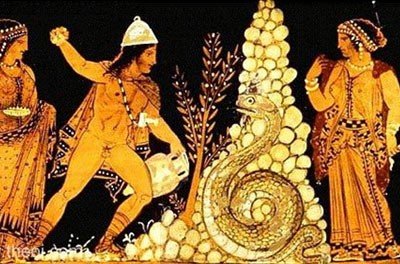
Harmonia and Kadmos
Musée du Louvre, N3157, attribuita a Python, 360-340 BCE
These few mythological elements could already create an incessant flow of considerations regarding the essence of harmony as a synthesis of the pluralism and integration of elements which are different. It is not possible for me to dwell too long on the symbolism of this topic, but the matter could be taken up again in its mythological meaning on another occasion. From the music of the Pythagorean spheres to the world of quantum physics and more, man continues to search for the harmony of the universe.
Pythagoras (575 B.C. – 495 B.C) proclaimed the principle of celestial harmony upon his return from a trip to the Orient, stating that all heavenly bodies travelling in space give off specific vibrations which, as a whole, create the “music of the spheres”. He identified the boundary between the known and unknown universes in the harmony of the spheres. Taking inspiration from these principles, he recommended a way of life aimed at recognizing and reproducing the harmony of Creation. His intuitions regarding mathematical and numerical sciences, the different levels of knowledge and way of life encouraged considerable developments in the Fifth and Fourth Century B.C., also influencing art, music, astronomy and geometry.
Heraclitus (535 B.C. – 475 B.C.), although he was very critical of the results of the Pythagorean investigation, affirmed that opposites join together in a principle of harmony. He maintained that only change and movement are real, that everything flows and therefore it is impossible to bathe twice in the same river. According to his theory regarding coming into existence, everything is in a constant state of movement and transformation. This hypothesis is mirrored in the theory of Chaos defined by James Gleick as “science of the process rather than of the state, of coming into existence rather than being.” The cognitive practice of Heraclitus therefore rotated around the axis of polarity and conjunction, very clearly indicating the harmony deriving from the assimilation of opposites. In this regard, his three fragments seem very clear to me:
- that which contrasts goes together, and the most beautiful harmony can come about from elements which conflict
- harmony which from one extreme returns to the other extreme like the bow and the lyre
- invisible harmony is better than visible
In the extremities of the bow and the lyre he represented the various polarities inherent to the concept of time and existence: beginning and end, life and death. For Heraclitus, harmony is born from opposite extremities which meet up, transcending temporality and the human sphere.
Even more in keeping with the concept of pluralism is the theory of the Pythagorean Filolao/Philolaus (470 BC- 390 BC) who described harmony as “a unity of the multiple and a concordance of the discordant”. The Roman architect and writer Vitruvius Pollio (80/70 BC – 23 BC) on the other hand, dedicated a whole chapter of his examination of architecture to harmony. He indicated the ratio 1:2 as the ideal plan for the construction of the temple which he considered to be the mirror of the poles, and through which the universe manifests itself. Porphyrius (234 -305), in Ptolemaic Harmony, also described nature and the quality of harmonious consonances.
Paracelsus (1493 -1541) stated: “As long as we do not know the state of the inner harmony of the patient, at the most we can release him from his illness. In this way, though, he will get sick again immediately afterwards, because nothing was done for his inner harmony. It is really on his inner harmony that one must act.”
In the Mysterium Cosmographicum (1596), Kepler suggested that in the creation of the world and in the lay-out of the skies, God had “looked at those five regular bodies which have been so famous from the times of Pythagoras and Plato” and that he had granted their nature with the number, the proportion and the relationships of the celestial motions. Later on, in book V of the Harmonices Mundi (1619), he linked harmonious relationships with the geometrical relations which he had already theorized about in the Mysterium. From the network of mathematics, musical theory and cosmology, Kepler brought to light the centrality and the importance of the planets, to which he assigned an interval in which the lowest note corresponded to the minimum speed and the highest note to the maximum speed. The pentagrams represented the harmonious structure of the cosmos where the space between the intervals was directly proportional to the eccentricity of the planets.
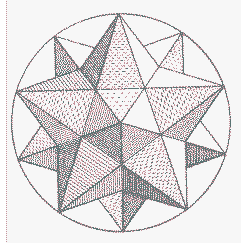
In the Seventeenth Century, the principle of the harmony of the spheres reached its highest expression, involving various areas of the sum of human knowledge: astronomy, astrology, theology, philosophy, music and anatomy. In western Astrology there are specific modern currents which are based on the theory of harmonics. The astrologer Dom Neroman, in Musique, Clef du Monde, suggests a concept of celestial harmonies associated with the structure of archetypes according to Plato’s world. John Addey (1920-1982), on the other hand, harking back to the Navamsha theory5 of the Jyotisa,6 elaborated the extremely interesting astrology of the Harmonics. However, at this moment I am not referring to the Astrology of the Harmonics in particular, but to the Harmony which is inherent to Astrology and to life in general.
According to Hindu Philosophy,7 the law of karma represents the harmony of that precise moment in which the soul chooses the time and the place of its conception, planting the seeds of its own coming into existence, through the cycle of death and rebirth. Cosmic time shows itself to be in harmony with the Earth and with the life of human beings through the metaphor of harmony created by the Damaru8 of Shiva Nataraja, Lord of cosmic dance and of the passage from one evolutionary cycle to the next, between an expansion and a contraction of the Cosmos. He dances in a circle of fire which represents the process of life and death. His movements communicate that everything is subject to change, just like the energy which constantly takes on new forms in the Lilā (game) of creation. The unending evolution of the universes is represented by his dance in space and by the movements measured in time to the rhythm of the tambourine in the shape of an hourglass. In fact, Shiva is also called Mahakāla, the Lord of cosmic time. Every cosmic cycle has a beginning, a peak, an end, a pause, a new beginning and so on.
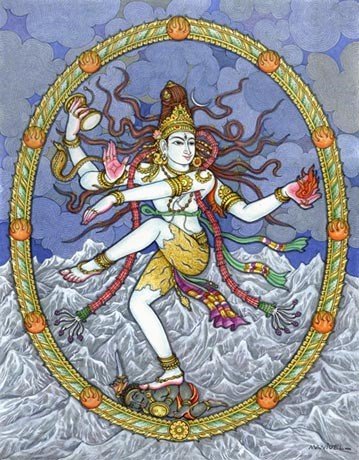
Nataraja
Himalayan Academy Publications, Kapaa, Kauai, Hawaii.
On the other hand, the pause of retreat and lull between one cycle and the next is represented by Vishnu who is asleep, lying down on the coils of Ananta the serpent, symbol of Infinity, which acts as a bed.

Vishnu lying on the coils of Ananta
These very ancient cosmological principles of cyclicity are similar to the concepts of New Physics,9 in which the Big Bang and the Big Crunch10 are cyclic phenomena. First of all, the universe goes through an initial phase of expansion, then the tendency is reversed and it gradually implodes until it reaches the dimensions of a galaxy, of a star, of a planet, of a stone, of a grain, of a planck11 and so on, until a new cycle of expansion returns.
The topics of harmony are therefore closely connected to the world of modern science. According to ultra-modern Physics, matter vibrates with different frequencies in a symphony of sounds. Every system, every basic particle, every galaxy and every human being is made up of sound, that fundamental unity at the base of the huge diversity of the Cosmos, of which the planetary system is only a small part. In cosmic harmony, each individuality, no matter how unique and unrepeatable it may be, is part of the energy of the whole and so it encompasses all the other kinds of energy in various measures. The same thing happens for some principles and realities in apparent antithesis. Homeostasis and chaos, for example, are two terms which are apparently incompatible because homeostasis12 is associated with a positive and useful function, while chaos is considered to be a synonym of uncontrollable disarray. Nevertheless, it is a question of an apparent or partial contradiction, because many chaotic aspects are embedded in homeostasis, while various regularities are concealed in chaos. In living beings, order and disarray, stability and changeability live together in a profitable harmony because even the human mind is pluriverse and a participant in the stages of the harmony and the imbalance of creation.
Perhaps, in the case of humans, the harmony between personal evolution and awareness of the other is tied up with a game of equilibrium between the process of “psychic homeostasis” and the function of the mirror neurons:13 on one hand, the homeostatic process helps to preserve the state which has been achieved and to satisfy needs, by limiting the external infiltrations which are too disruptive; on the other hand, the mirror neurons encourage empathy and identification in the actions and thoughts of others. I think that it is possible to pinpoint in these two functions a guarantee for the preservation of individuality on one hand and, on the other hand, an assurance for empathetic participation in the external world; all in all, harmony between the two sides.
In the complexity of this reality it would also be interesting to free oneself from the harmonic-universal monism, so as to open up to the plurality of the harmonies or of the universes, or rather, of the multiverses. Multiplicity, in fact, implies endless harmonies. The word “universe” is derived from the Latin universus, made up of unus (one) and versus (to be turned, to turn). Some of its meanings are “that it turns towards unity”, “that it turns in a single direction”. In the term “Pluriverse”, a neologism which means “in multiple directions” in its Latin etymology, I have found the synthesis of many years of reflection and intercultural experience. The term was coined in 1977 by the French philosopher Edgar Morin, in the essay La Méthode. 1. La Nature de la Nature, in which he proposed universality as a single body of multiple universes. If we play around a little with the words, the idea of a multiverse or pluriverse world, rather than a universal one, comes to my mind.
Since 1980, some cosmologists have been deducing that multiple universes could have been formed in a period before the Big Bang. More recently, according to some concepts of contemporary physics, what happens in our Universe originates from the vibrations of ultra-microscopic strings hidden in the depths of matter. According to Brian Greene, “The microscopic world seems to be full of little violin strings, and the way they vibrate orchestrates the evolution of the world”.14
However, I would not like these new theories to be confused with the insane and imaginary fantasies of some sectarian currents. Nor would I like someone to associate the Superstrings theory with the various salvific-apocalyptic movements in which one fantasizes about intergalactic journeys for the deserving or about parallel universes inhabited by thought forms or holograms inhabited by aliens, guardian spirits, UFOs and similar beings who are ready to save from planetary catastrophe those people who take refuge in the circle of the chosen, spreading the Good News. These strange movements often hold up, mixing filaments of misunderstood scientific theories with fragments of totally made up doctrines, with the threatening backdrop of various millennialism. Obviously, after the fateful date has passed and the proclaimed catastrophe has not happened, the prophecy is revised and changed. New revelations cancel the previous ones, they annul the sentence or they postpone it to another date, announcing that the change will only happen at the level of planetary awareness (something which is obviously of a real interest to everyone). This digression aims at specifying that absurdities of this kind have nothing to do with the world of New Physics nor do they have any relevance to the world of Astrology. Being open to cross culture and pluralism, however contradictory it may sound, does not mean justifying everything just because everything must be accepted without exception. On the other hand, disagreeing with these obsessions does not mean being disrespectful to whoever professes them nor least of all ignoring the existing nagging planetary problems which require a change to come to a solution. At this point, I think it would be useful to make some clarifications about the Superstrings theories.
III. Multiple universes and Superstrings; tools of awareness in astrological application
Celestial movements … are no more than an uninterrupted song for many voices perceived not by the ear, but by the mind, a figurative melody which traces reference points in the immeasurable passing of time
John Banville: Kepler (Minerva 1990)
For many years Kepler tried without success to understand the nature of the space between the Earth and the Sun, but he made the unavoidable and common mistake of his times: believing that our Solar System was the only one in existence.
The scientists and physicists who followed came to understand that our system is only one amongst those which exist in millions of galaxies. Presently, the discoveries and the studies of the physicists go well beyond the existence of numerous galaxies, arriving at the theories based on the existence of a great number of universes, of black holes which transform into basic particles and also gigantic universes which are interchangeable with tiny universes.
Modern physics is based on two foundations: the general relativity founded by Albert Einstein and the quantum mechanics validated by Max Planck. The first illustrates the behavior of large-sized objects (stars, galaxies, galaxy masses, etc.) present in the Universe; the second illustrates the atomic and subatomic world (molecules, atoms, electrons, quark, etc.). These two theories have allowed for extraordinary progress in the field of Physics, but they are incompatible. Physicists have deliberately ignored the fact that they are irreconcilable because each of the two theories can be applied to a different and specific investigative field and so it has not been necessary to resort to them both at the same time.
For example, in order to study small light objects quantum mechanics was used; on the other hand, the laws of general relativity were used to analyse large heavy objects. However, new requirements have recently come about: black holes, for example, are objects with a very heavy mass, but at the same time they are very small, and so the study of them would require the simultaneous application of the two theories. Einstein had perceived that the basic level of nature was a single unified field, but he was unable to find it, not even after thirty years of assiduous studies and research.
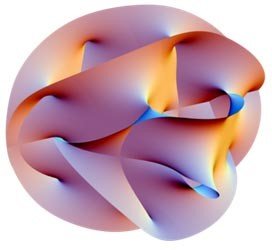
Many physicists and mathematicians are now investigating the various theories of the Superstrings. According to these ideas, the incompatibility between general relativity and the mechanics of the quantum is overcome, because all the events in the universe are born from microscopic cycles of energy hidden in the nucleus of the matter. Invisible dimensions enveloped in the folds of space, black holes which can be transformed into basic particles, an irregularity in the Space-time network, Universes which generate other Universes: this is the cosmic vision, according to the Theory of the Superstrings.
In truth, there is not just one strings theory. Physicists have arrived at the formulation of five theories which are very similar, but each with a few differences. In some theories, the strings are circular loops, in others they are ropes with free extremities. Presently, the most popular is the theory of super gravity in 11 dimensions, called the M-theory, the pivotal point of which is the unification of the four basic forces, including gravity. The M-theory belongs to the TOE (Theory of Everything), which is capable of embracing in a single formulation all of the interactions and particles which are present in nature. According to these theories, the vibrations of the strings manifest themselves as particles, the mass and charge of which are determined by the fluctuations of the string itself. Just like the strings of a musical instrument they produce different notes and so the different vibrations of the superstrings are highlighted by means of scientific instruments in the shape of protons, electrons, quarks and photons, etc. Greene adds that if we could examine the strings in greater detail, we would see that the particles are not point form, but they present a kind of tiny one-dimensional ring. In short, he establishes that no rule of physics confirms the idea that time flows in a particular direction. His vision culminates in a multiverse, where space and time can dissolve in finer and more basic essences.
Even the human conscience is made up of particles and endless systems on the invisible background of vibrating waves that risked a reality which was not only quantitative but also qualitative. According to the physicist John Hagelin, the theory of the superstrings opens up the possibility of a field of thought named “hidden sector matter”, which creates a connection between awareness and the physical brain. Awareness, in fact, can be reflected or modulated by the brain, but not created by it. Thus, Hagelin states that the container of awareness in the human being is the mental or subtle body, formed by an aggregated state of particles and intimately associated with thought: just like atoms are held together by photons, electrons, protons, neutrons and particles.
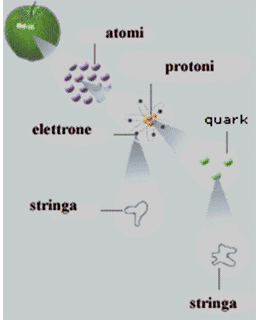
In India, right from ancient times, it has been argued that the human being is made up of three bodies: Sthula sharira (large or physical body), Sukshma sharira (subtle or mental body) and Karana sharira (causal or cosmic body). The whole of the three bodies forms the parts of the cosmic yantra यन्त्र.15
The subtle body acts as a bridge between the large and the causal one; moreover, it is the bearer of the awareness which lies, as if asleep, in a potential form. Awareness can be activated through various instruments: meditation, contemplation, visualizations, mantras मन्त्र,16 the analysis of one’s own planetary situation, etc.
The essence of the mantra is as subtle as the channels of the subtle body and the strings of the superstrings, and so it can be perceived through channels which are different from the usual ones. The same thing happens for the energy, the vibrations and the sounds of the celestial bodies. According to Indian Astrology, the combination of the planets in the natal chart implies infinity of sounds and shapes which can be associated with mantras and yantras. Each celestial body possesses its own specific mantra and meditating on this one can get into tune with its energy. Indian astrologers, often, in order to improve their own level of awareness and to enter delicately into the world of the native, meditate deeply on the mantras of the analyzed planets; moreover, they all usually supply the consultant with a specific mantra to help him to recompose the kind of harmony he needs. There is a connection between listening to the mantra and the mirror neurons which act on the phonetic articulation17 in the temporal area, immediately pertaining to the auditory system. The mantras are capable of perfecting the action of the mirror neurons, strengthening the ability of the individual to become a part of the others a little, or to rediscover that he already is; at the same time, mantras also improve the total functionality of the homeostatic process. Through the sound of the mantra, the astrologer is reflected in the planet as a part of the cosmos, a part of himself and of the native under examination, according to expressions which are diversified by quantity and quality. The result is a unique, personal and individual interpretation of specific astrological factors, while at the same time remaining faithful to their canonic meanings: a harmony between fidelity to the canon and the overcoming of it.
iv. Astrology and Jyotisa
By going deep into that entity which is myself I have the possibility of going infinitely farther. This is what really matters; if this is missing, life has really little meaning, because there is nothing left but a cycle of pleasure and pain, punishments and rewards.
(Jiddu Krishnamurti, ‘Knowledge’, in Questions and Answers, 1983).
Astrology is perhaps the oldest study material in the history of humanity. In the Rig Veda, for example, a particular position of the stars which could only have happened ninety-five thousand years ago, is hinted at. Astrological knowledge is the fruit of the many thousands of years of synergy between different cultures (Mesopotamic, Egyptian, Indian, Greek, Latin, Arab, American Indian, etc). Several intuitions arising from the cosmic matrix of the collective unconscious have developed from these cultures which differ so much. Moreover, this knowledge is expressed even today through the most varied means (cosmogonist, philosophical, mythological, psychological, humanistic, anticipatory, medical, astronomical, scientific, mathematical, statistical, etc). Every civilization has developed its own astrological system which could seem incompatible with the others, but which enlightens a specific field of this multifaceted discipline more vividly.
Astrology is a source which is still alive and operating. Notwithstanding the ebb and flow of rejection from some circles, it continues to be backed up by the undiminished consolidation of practice, studies and research. It continues to maintain a relationship with the historical events from which is has re-emerged after repeated intervals of suspension. I find the Sanskrit term which denominates astrology particularly fascinating: Jyotisa, ज्योतिष,18 “that which illuminates, the art of light”.
It is a light which does not just brighten the future but also the shadows of the past through the half-light of the present. Jyotisa is the art which studies and which deciphers the nature of the karmic seeds so that the native can find his melody, attuning himself with the essence of Vastupurusha (bodily representation of cosmic space). Jyotisa associates the twelve zodiacal signs to Kalapurusha’s limbs: Kalapurusha’s soul is the Sun, his mind is the Moon, and his spinal column is the cosmic axis. In the same way, in the microcosm (the human being) the right eye represents the Sun, the left eye the Moon; the spinal column represents the Meru mountain and the axis of the world. In western Astrology, as well, the zodiacal melotesia associates the signs with the parts of the human body, as can be seen in the masterpiece of the Limbourg brothers.
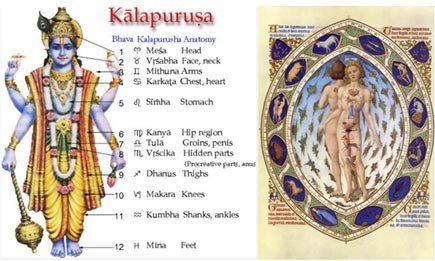
Above right: Fratelli Limbourg Les très heures du duc de Berry.
Below: Sapta chakra, 1899. https://en.wikipedia. Vastupurusha

Jyotisa, as well as comprising the elements which are common to those of all the other astrological traditions, includes a very particular principle in its system: karma कर्म.
According to the karmic principles of Astrology, the Cosmos is a living organism and the human being is regulated by the same laws which govern the worlds, the celestial bodies and the universes. Each human creature, in fact, as has already been pointed out, is made up of the large physical body, the subtle body (which has the role of channeling the necessary energy and broadening its own conscience) and the causal body which is identical to the cosmos. The subtle or mental body is invisible and vibrant; it is crossed by a very thin network of energetic channels, just like the particles of matter are crossed by invisible, vibrant superstrings.
Every ‘Birth Theme’ reflects as a whole and in the details a very elaborate symbology which requires various levels of reading. The Kalapurusha is represented in the temporal map of the chart with its planetary configurations and interactions, in the same way in which Vastupurusha is active in the spatial map of a temple with the sixty-four boxes which define the orientation of the building in harmony with the cardinal points and with the path of the stars. Just like in the heart of the temple, the universe is expressed in the heart of every birth chart with its rhythms of space and time: fences, entrances and labyrinths mark the journey of the native in his quest for lost harmony.
The planetary system is a living organism, made up of energies and parts bound to each other by harmonic relationships. Awareness of the position and of the planetary characteristics in his own birth Theme helps the native to understand his past cycles and to get clues from them in order to understand how the future might be and how to ultimately undertake the return journey to the Cosmos. In fact, Astrology allows access to a dimension in which experiences; reflections and images permit the native to retrieve his sense of belonging, and also the knowledge that he is deeply connected to the Whole, even though he is only a single individual. For the spiritual astrologer and for the ascetic in general, each planet is an extension of his Self in the outer (akasha) space of the universe and in the inner space of his human awareness (cidakasha).
v. Conclusion
While our glance turns towards the celestial vault, the mirror of universal or rather pluriverse myths, it is possible to perceive that the astrological code is an instrument of interculture and pluralism which has been in existence for thousands of years and which is still functioning. Using this ancient art as an instrument of knowledge implies a journey to recover the authentic part of ourselves which lives and pulsates, notwithstanding conditioning and frustrations.
The journey, in fact, is the willingness to open up, to question those certainties and visions which have become rigid because of set patterns. Moreover, the journey period entails a wide inner space in the same way that unchartered territories allow us to get to know ourselves in the light of new discoveries. The voyage through the planetary symbols and archetypes is a pilgrimage towards the huge dark expanses inside our night, where we find our stability by facing up to the apparent loss of our identity. Inside and outside ourselves, in space and time, there is a starry blanket in which personal histories and ancient memories, which are common to all of humanity, can be found.
Living the multiplicity of these histories introduces us to pluralism and therefore to non-violence. Through the astrological discipline, the native who is interested in the journey can face the future in the most harmonious possible way, starting from the past and absorbing the knowledge of the present. Astrology is art, discipline, technique and much more. It permits the harmonious synthesis between logical thought and analogical thought, between rationality and irrationality. As we have seen, it helps the native to identify himself but also to enter into contact with others.
And what about the astrologer? Right from the beginning of his or her studies, the astrologer becomes immersed in a pluridisciplinary and complex system, committing rigorously to the study, the research and the systematic elaboration of all the materials pertaining to astrology: astronomy, cosmogony, codes of conduct, elements of statistics, ethics, philosophy, geography, information technology, mathematics, application and consultancy methodology, mythology, psychology, linguistic reflection, symbology, sociology, history, astrological technique, communications technique, principles and rules of interpretation, etc. With regard to consultancy, the astrologer commits to adding clarity of intention, cultural honesty, sensitivity, humanity, an ability to found relationships, an ability to listen, empathy, respect, an ability to analyse and to summarise, a continuous personal training and a profound inclination towards interculture, the disciplines and subjects which have already been mentioned. At the moment when the astrologer interprets the factors of a chart, he or she must also find the balance between a scrupulous adhesion to the canonical meanings handed down from tradition and the personalization of them by associating them to the nature of the native. In other words, although the astrologer must keep the origins of the tradition solid and clear without distorting and twisting them, it is also necessary you make them flexible and adaptable to the specific case and to the emerging situation. Last but not least, and with even more awareness, the astrologer must be able to safeguard individuality and at the same time know how to establish a strong contact with the native; to know and practise the very precious art of harmony between “contact and boundary”, fusion and withdrawal. If one immerses oneself in the flow of change, which involves bodies and spaces and times and places, practising Astrology is like singing a “mantra” which is capable of getting in tune with the vibrations of the universe, of the Earth and of humans, with its energy. The close connection between rhythm and harmony and between small and large implies a rituality which allows the native to perceive the cosmic energy that is imminent in everything that exists.
However, it is not always necessary to decipher the entire celestial vault in order to perceive the planetary energy which we share with the cosmos. At times, small effective gestures, like a special look or a wave of our hands, is enough. The potential for mimicry of our hands, in fact, expresses our mood and our frame of mind through every small movement. How much harmony a simple daily greeting hides! How much harmony is expressed through ancient and symbolic gestures like the Mudra मुद्रा!19
The Mudra of the Namaste or Namaskar, for example, is the simple act of uniting the palms of the hands to greet another person, recognizing the cosmic energy which gives him life. The left hand which represents the female principle, the Moon, joins together with the right hand which is the male principle, the Sun. By joining the two hands together in an inspiration of awareness, the integration of the two polarities is conveyed, experimenting with an experience of unity by means of the two polar principles which, by joining together, unlock a multiplicity of planets, stars and endless galaxies. Every time that we join our hands together in a state of awareness we can feel the energy of our luminaries (Sun and Moon), of our parents, of our forefathers, and of the universes. With a single gesture we retrace the evolutionary process of creation and therefore of our birth and of our birth Theme.
Interpreting an astral chart requires the same energy as a ritual act, it is like joining the hands together in order to retrieve the cosmos; it involves the sacredness of entering into the temple, the awareness of a gesture in space-time. The circle which symbolically encloses the astral configurations of the native is the boundary between the sky and the earth, between the known and the unknown, between us and the other. Immersing ourselves in the meanders of the chart means immersing ourselves in the life of others, and so our shoes must be left on the threshold. Each birth chart being the blueprint of the corresponding native is unique and incomparable: it is the manifestation of diversity and plurality in time-space.

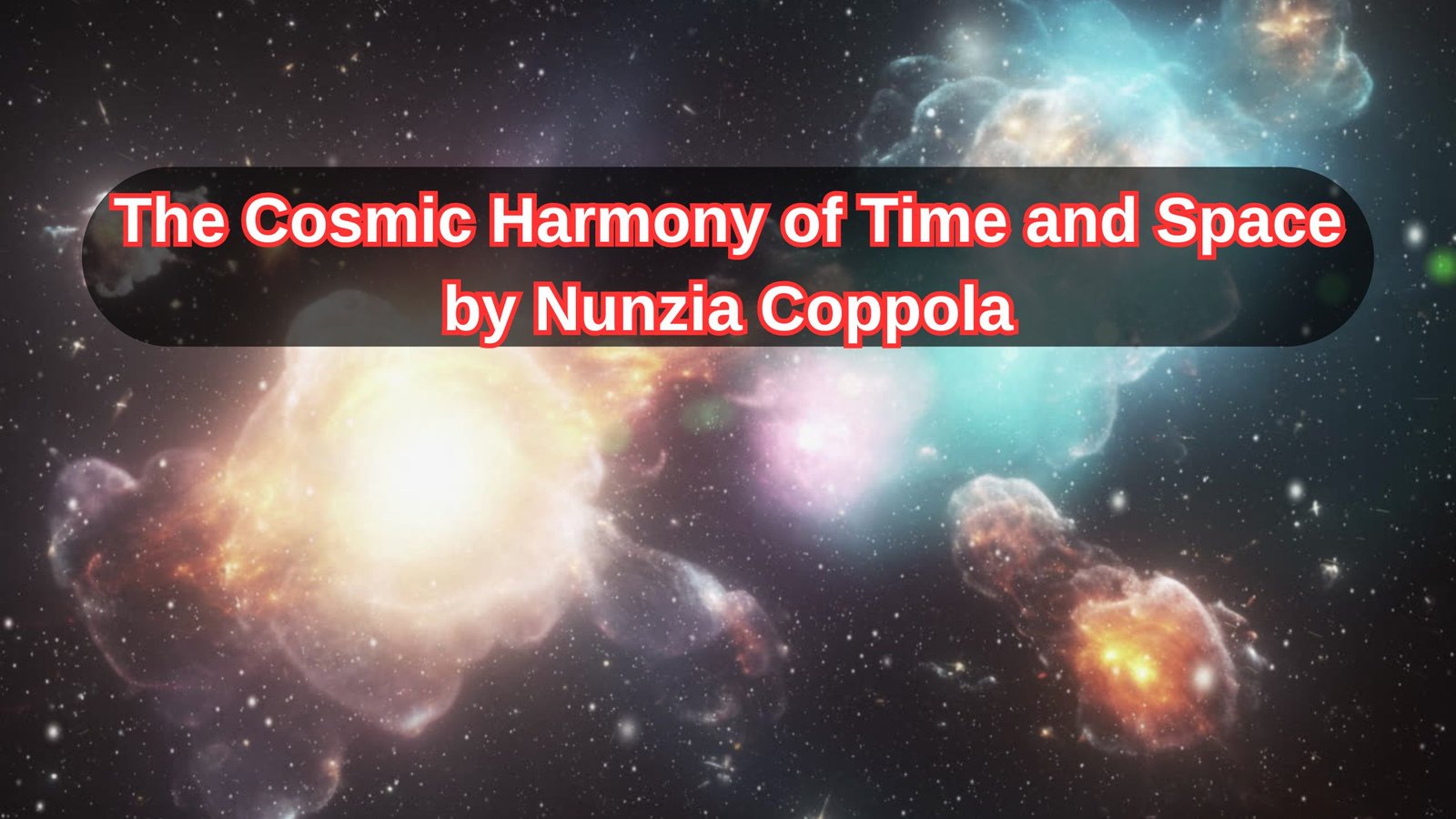
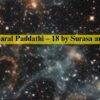
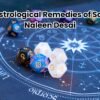
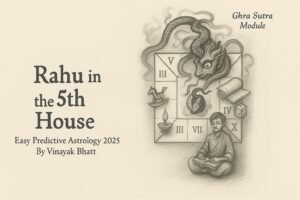
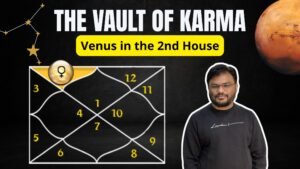
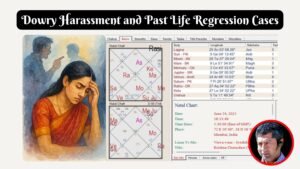


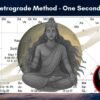
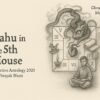

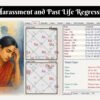
Leave a reply
You must be logged in to post a comment.